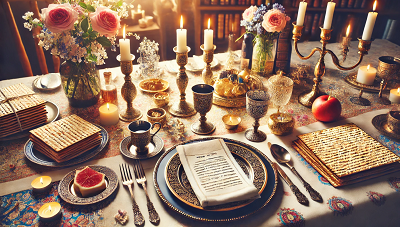Introduction
The Seder holiday, a central event in Jewish culture, marks the beginning of Passover and commemorates the Israelites’ exodus from Egypt. This celebration is rich with traditions, rituals, and a significant historical backdrop that has been preserved and adapted through centuries. Understanding the Seder’s relevance today, as reported by various sources including the New York Times, offers a fascinating insight into its enduring significance.
Historical Context of the Seder Holiday
Origins of Passover
The Passover holiday, also known as Pesach, originates from the biblical story of Exodus. The Israelites, under Moses’ leadership, escaped slavery in Egypt, an event celebrated annually.
Evolution Over Centuries
The Seder has evolved from ancient rituals to a structured ceremony. The traditions have been passed down through generations, adapting to cultural and societal changes while retaining core elements.
Influence of Jewish Diaspora
The Jewish diaspora has influenced how Seder is celebrated around the world. Different communities add unique elements to the Seder, reflecting their cultural backgrounds.
Key Principles of Seder
The Haggadah
The Haggadah is a central text in the Seder, guiding the ceremony with prayers, stories, and songs. It outlines the order of the Seder and includes the narrative of the Exodus.
Four Questions
A distinctive part of the Seder involves the youngest participant asking the Four Questions, which highlight the differences between Passover and other nights.
Symbolic Foods
Each food on the Seder plate has symbolic meaning. For instance, the bitter herbs represent the bitterness of slavery, and the charoset symbolizes the mortar used by the Israelites in Egypt.
Methodologies and Tools Used in Seder Preparation
Selecting the Seder Plate Items
Choosing items for the Seder plate involves careful consideration of their symbolic meanings and traditional requirements.
Preparing the Matzah
Matzah, unleavened bread, is a staple of the Seder. Its preparation is strictly monitored to ensure it remains unleavened, symbolizing the haste of the Israelites’ departure from Egypt.
Arranging the Seder Table
The Seder table is meticulously arranged to enhance the ritual’s experience, with each item placed to reflect its importance in the ceremony.
Cultural Impact of the Seder Holiday
Influence on Jewish Identity
The Seder reinforces Jewish identity and community bonds. It serves as a reminder of shared history and traditions.
Representation in Media
The Seder has been depicted in various forms of media, including films, literature, and journalism, highlighting its cultural significance.
Interfaith Observations
In some contexts, interfaith Seders are held to promote understanding and solidarity among different religious groups.
Modern Celebrations and Innovations
Virtual Seders
With advancements in technology, virtual Seders have become popular, especially during the COVID-19 pandemic, allowing families to connect remotely.
Contemporary Haggadahs
Modern Haggadahs incorporate current themes and issues, making the Seder more relatable to today’s participants.
Environmental and Ethical Themes
Some Seders focus on themes like environmentalism and social justice, reflecting modern values and concerns.
Personal Stories and Case Studies
Family Traditions
Individual families often have unique Seder traditions that add personal touches to the celebration.
Stories of Survival and Resilience
Many personal accounts highlight the Seder’s role in maintaining hope and resilience, even in challenging times.
Community Seders
Community Seders bring people together, fostering a sense of unity and shared heritage.
Expert Insights
Rabbi Perspectives
Rabbinical insights provide deeper understanding of the Seder’s rituals and their significance.
Cultural Anthropologists
Anthropologists offer perspectives on how the Seder reflects and influences cultural practices within Jewish communities.
Historians
Historical analyses enrich the understanding of how the Seder has adapted over time while retaining its core principles.
Conclusion
The Seder holiday, as richly detailed in various reports and articles, including those by the New York Times, is a profound celebration that encapsulates history, tradition, and modern innovation. Its enduring significance is a testament to the resilience and adaptability of Jewish culture. As we continue to observe and adapt these traditions, the Seder remains a vital link to the past and a beacon for future generations.





